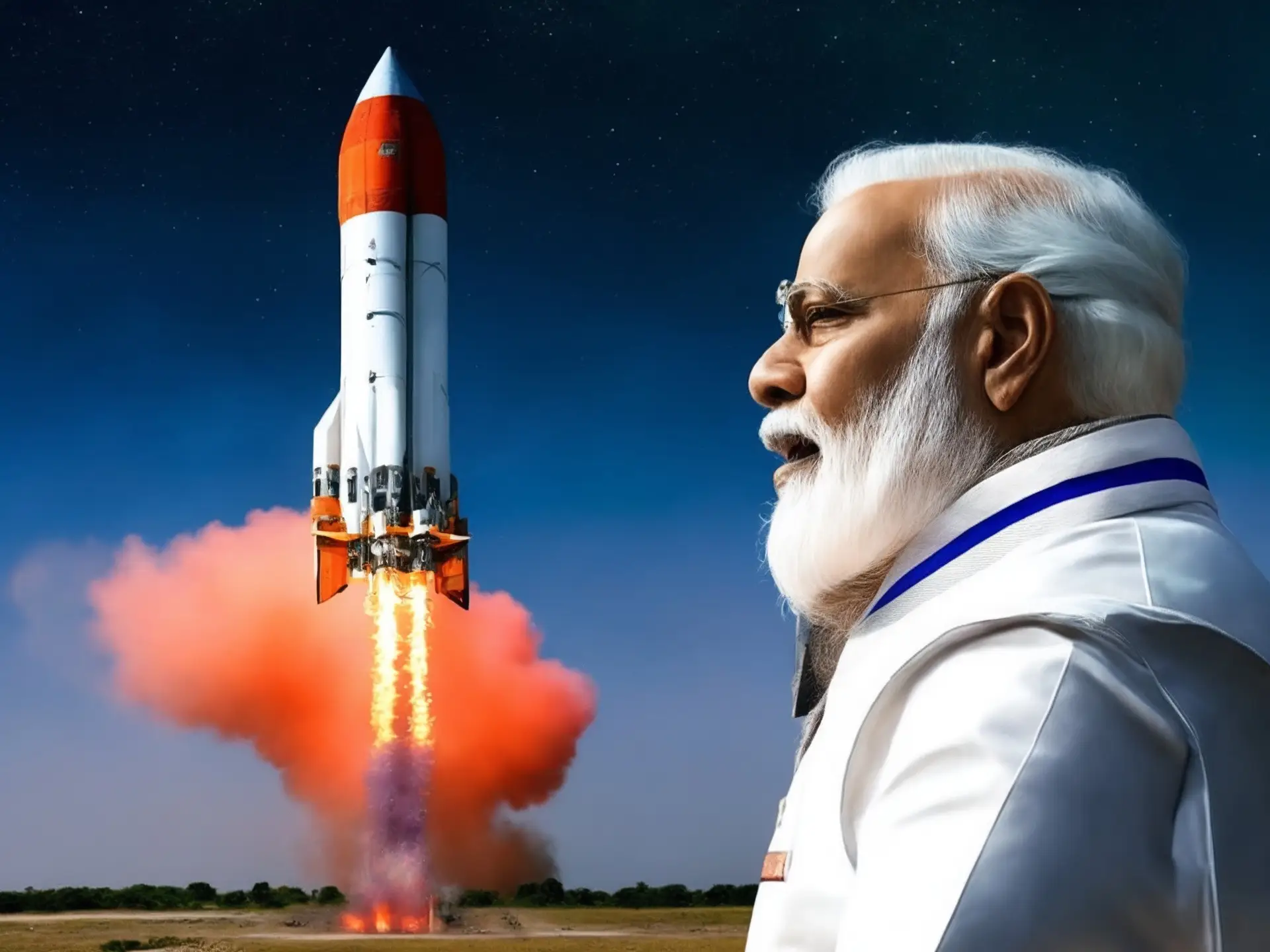On August 23, 2023, India achieved a historic milestone in space exploration by successfully launching Chandrayaan 3 and conquering the South Pole of the Moon. The Indian Space Research Organization (ISRO) accomplished this feat with the launch of Chandrayaan 3. This achievement marks India as the first country to reach and explore the Moon’s South Pole.
Prime Minister Modi’s Unifying Message
During a summit in South Africa with leaders from the United States, China, and other nations, Prime Minister Narendra Modi addressed the global audience. In his speech, he emphasized a unifying vision, advocating for values centered around “One Earth, One Family, and One Future.” This message underscored India’s commitment to international cooperation and shared progress, reflecting the collaborative spirit that drives the nation’s space endeavors.
Significance of Chandrayaan 3
The Chandrayaan 3 mission’s success is not only a testament to India’s technological prowess but also a significant milestone in the country’s space exploration journey. The mission’s focus on the Moon’s South Pole is particularly noteworthy due to the region’s potential reserves of water ice and other resources. These resources are crucial for future lunar habitation and space exploration, as they could provide essential life support elements and fuel for long-duration missions.
Objectives and Scientific Goals
The primary objectives of the Chandrayaan 3 mission include:
- Continuing the exploration of the Moon’s surface, especially the South Pole region.
- Studying the geological composition of the lunar surface.
- Conducting experiments to better understand the Moon’s formation and evolution.
The South Pole of the Moon is of great interest to scientists and researchers. Its permanently shadowed regions are believed to contain water ice, which could be invaluable for future missions. Water is a critical resource for human space exploration, providing drinking water, oxygen, and hydrogen for fuel. By exploring this region, Chandrayaan 3 aims to gather crucial data that could inform future lunar and space exploration missions.
Technological Achievements
Chandrayaan 3 demonstrated several advanced technologies, including a sophisticated landing system designed to ensure a soft and precise touchdown on the lunar surface. This technology is vital for the success of future missions, as it increases the likelihood of landing in scientifically valuable but challenging terrain. Additionally, the mission’s rover is equipped with instruments to analyze the lunar soil and rocks, providing detailed information about the Moon’s composition and history.
International Collaboration
The success of Chandrayaan 3 has bolstered India’s position as a key player in the global space community. This achievement has demonstrated India’s technological capabilities and expertise in space exploration, paving the way for future collaborations with other nations and space agencies. International cooperation in space exploration is essential for pooling resources, sharing knowledge, and tackling the challenges of space travel together. India’s willingness to collaborate and contribute to global space initiatives highlights its commitment to advancing scientific knowledge and benefiting humanity as a whole.
Broader Implications
The successful launch and exploration of the Moon’s South Pole by Chandrayaan 3 have broader implications for the future of space exploration. By achieving this milestone, India has demonstrated that it possesses the technological and scientific capabilities to undertake complex space missions. This accomplishment is likely to inspire other countries and organizations to pursue ambitious space exploration goals, fostering a spirit of innovation and discovery.
Moreover, Chandrayaan 3’s success has significant implications for future lunar missions. The data collected by the mission will provide valuable insights into the Moon’s environment, helping to inform the planning and execution of future manned and unmanned missions. Understanding the resources available on the Moon, such as water ice, will be crucial for establishing sustainable lunar bases and supporting long-term human presence on the Moon.
Future Prospects
Looking ahead, the future of the Chandrayaan 3 mission holds immense promise and potential for further advancements in space technology, scientific discovery, and international collaboration. The mission’s success serves as a foundation for future exploration efforts, including potential manned missions to the Moon and beyond.
As ISRO continues to build on the success of Chandrayaan 3, the organization is likely to pursue more ambitious missions, exploring new frontiers and pushing the boundaries of human knowledge. These efforts will not only enhance our understanding of the Moon and other celestial bodies but also contribute to the development of technologies that can be applied to a wide range of scientific and practical applications on Earth.
Conclusion
India’s achievement with Chandrayaan 3 represents a significant step forward in space exploration, setting the stage for continued advancements and cooperative efforts in understanding and exploring the universe. The mission’s success, coupled with Prime Minister Modi’s inspiring words, highlights India’s dedication to exploring new frontiers for the betterment of humanity as a whole. As we look to the future, the Chandrayaan 3 mission serves as a beacon of hope and progress, demonstrating what can be achieved through determination, innovation, and international collaboration.




